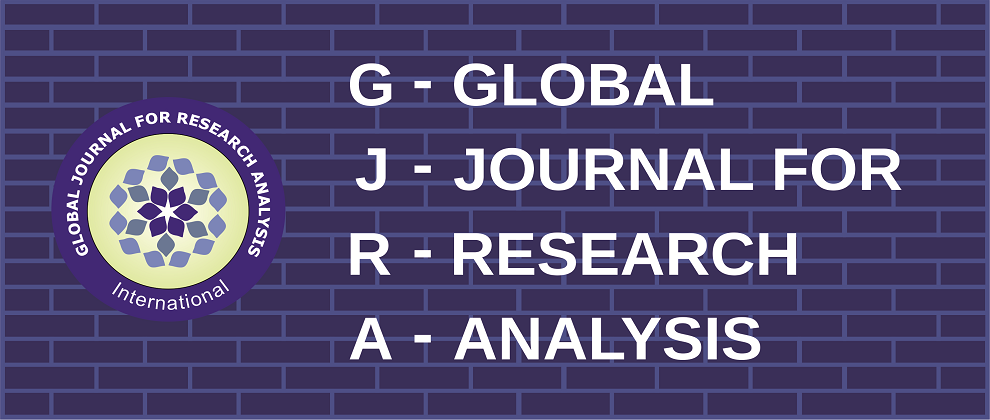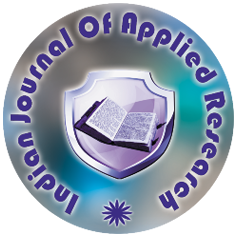Volume : VIII, Issue : XI, November - 2019
CLINICAL EVALUATION AND MANAGEMENT OF SOLITARY NODULE OF THYROID IN EUTHYROID PATIENTS
Dr. M. Venkateswarulu, Dr. A. Sai Datta, Dr. Rajitha, Dr. Renuka, Dr. Anand, Dr. Ravindra, Dr. Deepak
Abstract :
BACK GROUND: Solitary nodules of the thyroid have been the area of focus in research since Warren Colein 1949. It is an area of research with much potential because of its diverse clinicalpresentation and its wide-ranging etiology and often the risk of malignancy. But the studiesassessing the prevalence and clinical profile of solitary thyroid nodules are relatively scarcefrom India. Hence the current study was conducted with the objective of determining theprevalence of solitary nodule of thyroid in general Population and to determine the proportion of a solitary nodule of thyroid turning out to be multinodular goitre on subsequentevaluation. The study has also assessed the role of FNAC in the management of solitarynodule of the thyroid and estimatedincidence of carcinoma as a cause of solitary Noduleof the thyroid to determine the underlying cause of Solitary nodule of thyroid (SNT) by theHPE. MATERIALS & METHODS:This study was a prospective study conducted in the Department of General surgery inKATURI MEDICAL COLLEGE fromNovember 2016 to May 2018 for a period of 1.5years.The study population included Solitary Nodule of Thyroid admitted to theDepartment of General surgery at Katuri medical collegewere considered as thestudy population. The prevalence was computed against all the OPD attendees in thedefined study period. The findings of ultrasonography, FNAC and HPE were comparedusing cross tabulation. Since the study did not attempt to test any hypothesis, No statisticaltest of significance was used. IBM SPSS statistical software version 21 was used for data/analysis. RESULTS:During the study period, the total number of subjects attending the Outpatient departmentwere 6485.Among all the outpatient attendees, the prevalence of solitary thyroid nodulewas 1.23% with 95% CI ranging from 0.96% to 1.5%.Out of 80 clinically diagnosed solitarythyroid nodule cases multi nodular goitrewas found in 7 (8.8%) subjects on subsequentevaluation. In USG, 51.3% had Hyper Echogenic Nodule while 23.8% had MixedEchogenic Nodule. In 8.8%, the nodule turned out to be a part of Multi Nodular Goiter while7.5% had Suspicious Multi Nodular Goiter. In FNAC, 86.2% of the nodules were benign onFNAC. The majority (32.50%) were Benign Colloid Nodules. 26% were colloid nodules inFNAC. 13.8% of the nodules were malignant in FNAC. Papillary thyroid carcinoma wasseen in 12.5% in FNCAC. In HPE, the majority (78.5%) were benign nodules. Only 21.5%were malignant. In HPE, 32.5% were a benign follicular adenoma. The proportion of Colloid Nodule was 31.3%, and nodular goitre was 5%. The proportion of Papillary Thyroid Carcinoma, Hashimoto’s thyroiditis, Well-Differentiated PTC, Anaplastic ca. of Thyroid was 13.80%, 3.80%, 2.50% and 1.3% respectively. CONCLUSIONS: The current study had assessed the burden and clinic pathologicprofile of solitary thyroid nodulecases. The study findings is an important addition to the existing evidence and guide the clinicians at various levels in evidence based evaluation and management of the patients with solitary thyroid nodule.
Keywords :
Article:
Download PDF
DOI : https://www.doi.org/10.36106/gjra/1409615
Cite This Article:
CLINICAL EVALUATION AND MANAGEMENT OF SOLITARY NODULE OF THYROID IN EUTHYROID PATIENTS, Dr.M.Venkateswarulu, Dr.A.Sai Datta, Dr.Rajitha, Dr.Renuka, Dr.Anand, Dr.Ravindra, Dr.Deepak GLOBAL JOURNAL FOR RESEARCH ANALYSIS : Volume-8 | Issue-11 | November-2019
Number of Downloads : 597
References :
CLINICAL EVALUATION AND MANAGEMENT OF SOLITARY NODULE OF THYROID IN EUTHYROID PATIENTS, Dr.M.Venkateswarulu, Dr.A.Sai Datta, Dr.Rajitha, Dr.Renuka, Dr.Anand, Dr.Ravindra, Dr.Deepak GLOBAL JOURNAL FOR RESEARCH ANALYSIS : Volume-8 | Issue-11 | November-2019


 MENU
MENU


 MENU
MENU






